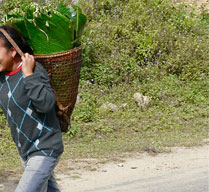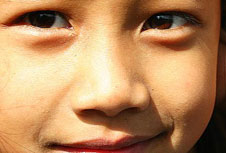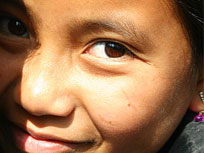|
|
|
North East
India Tourism |
|
|
The
north-eastern region of India is the most varied, but also the
least visited by the foreign travelers. Before independence,
the entire north-east was known as Assam Province. The North East is a
frontier region in every sense. It has over 800 km of border
with Burma and at least that distance again with China and
Bhutan. But although the northern border runs through the
easternmost extension of the Himalayas and the border to the
south east with Burma also runs through mountain ranges, the
north eastern hill states are a region of transition. Even
Assam, now confined largely to the Brahmaputra Valley, is
highly distinct. |
|
 |
 |
|
|
Various
factors including ethnic and linguistic divides led to the
formation of seven separate States, now popularly called the
seven sisters. These seven states are of Assam, Arunachal Pradesh, Meghalaya, Nagaland,
Manipur, Mizoram, Tripura. These states are situated in the
north-eastern part of India. In many ways, north-east is very
much unlike the rest of India. It is an area inhabited by a
great number of tribes who speak a hundred different dialects
and languages. In Arunachal Pradesh alone, over 50 distinct
languages are spoken. In some ways, these hill tribes are
similar to tribes found in other parts of the Himalayas. The
tribal people here have more similarity with those found in
Burma, Thailand and Laos. During the British period, the
Christian missionaries found the tribesmen an easy prey for
conversion under the State patronage. The missionaries were
the only people to get Inner Line Permits to enter the tribal
areas. Although predominantly Christians, these hill men still
follow their old customs and traditions akin to Hindus. The
partition in 1947 was greatly responsible for the region’s
separation from India, but the tourism has been recently
promoted in the north-eastern states of India. Since 1972,
Parliament of India has set up a North Eastern Council marking
a new chapter of planned development of Assam, Arunachal
Pradesh, Manipur, Meghalaya, Mizoram, Nagaland and Tripura.
Recently Sikkim has been added to the list. |
|
 |
 |
|
|
The infinite
variety of its geographic setting, topography, varied flora
and fauna and avian life, rare orchids and butterflies,
brightly painted monasteries, challenging rivers, the history
of ancient traditions and lifestyles, its festivals and crafts
make it a wonderful holiday destination. We look forward to
welcome you in North East India ! |
|
|
|
|
|
|
|
Tribal festivals dates of Nagaland & Arunachal
Pradesh |
|
S. No. |
Festival |
Festival
Date |
|
01 |
Reh Festival |
1st February |
|
02 |
Boori Boot Festival |
6th February |
|
03 |
Tam Ladu Festival |
15th February |
|
04 |
Oriah Festival |
16th February |
|
05 |
Nyokum Festival |
26th February |
|
06 |
Aran Festival |
7th March |
|
07 |
Myoko Festival |
21st to 23rd March |
|
08 |
Aoling |
2nd to 6th April |
|
09 |
Mopin Festival |
5th April |
|
10 |
Pongtu Festival |
11th April |
|
11 |
Sanken Festival |
14th April |
|
12 |
Etor Festival |
15th May |
|
13 |
Dree Festival |
5th July |
|
14 |
Tokhü Emong |
1st week of November in Nagaland |
|
|
|